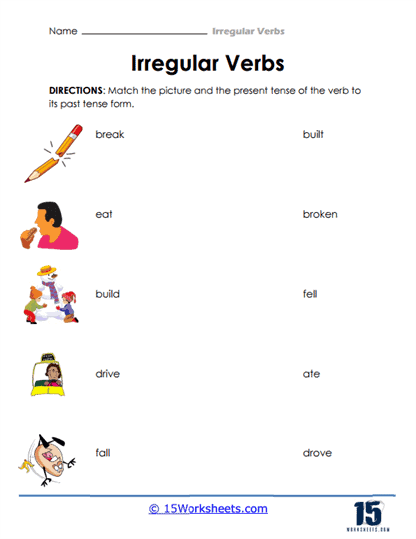

This collection of worksheets are designed to help students practice and understand the unique forms of irregular verbs in the English language. These worksheets include exercises and activities that require students to identify and use irregular verbs in sentences.
These worksheets provide students with lists of common irregular verbs and their past tense and past participle forms to help them memorize and internalize the irregular verb forms. Some worksheets may also include visual aids to help students expand their vocabulary while getting a better understanding of the patterns and variations of irregular verb forms. Through these worksheets, students will:
By completing these worksheets on irregular verbs, teachers can help their students improve their understanding and use of these important verbs in spoken and written communication. Consistent practice with irregular verbs can help learners build their vocabulary, increase their fluency, and ultimately become more confident and effective communicators in the English language.
Irregular verbs are verbs in the English language that do not follow the regular conjugation pattern in the past tense or past participle form. Unlike regular verbs, which form their past tense by adding -ed to the base form of the verb (e.g. “walked,” “talked”), irregular verbs have their own unique forms in the past tense and past participle.
Examples of irregular verbs include “go” (went, gone), “eat” (ate, eaten), “write” (wrote, written), and “break” (broke, broken). It is important to learn these irregular verb forms as they do not follow a predictable pattern and must be memorized. With this, here are some tips on how to transform irregular verbs into their past and past participle forms:
Remember, mastering irregular verbs takes time and practice, but with dedication and effort, students can become more comfortable using them in both verbal and written communication.